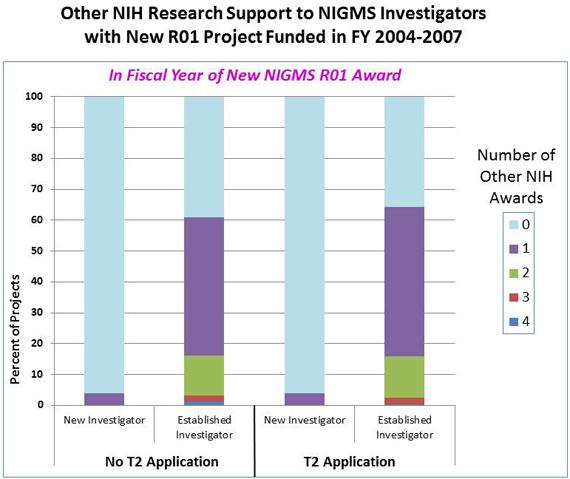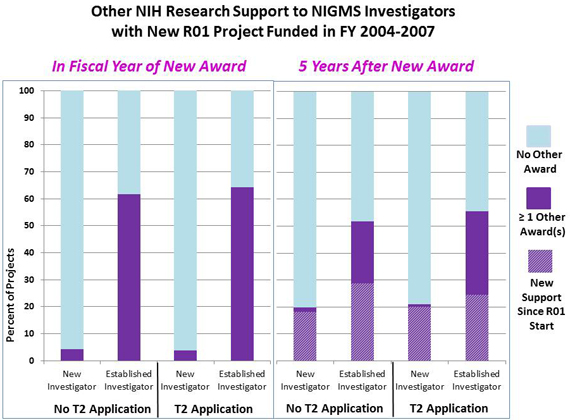The following data are related to an NIGMS Feedback Loop post from June 18, 2015, on Further Analysis of Renewal Rates for New and Established NIGMS Investigator Projects.

Figure 4. NIGMS investigators’ other NIH research support in the same fiscal year as their new NIGMS R01 award, Fiscal Years 2004-2007.

Figure 4A. NIGMS investigators’ other NIH research support in the same fiscal year as their new NIGMS R01 award (left panel) and 5 years after the start of their new NIGMS R01 award (right panel), Fiscal Years 2004-2007. Four percent of new investigator projects were to investigators who also received another R01-type research project grant (R01, R37, DP1) in the same fiscal year, while more than 60% of the established investigator projects were to investigators with at least one other R01-type research project grant. Five years after the new R01 award, when investigators are about to, in the process of or have just completed their first renewal of that R01, more than 50% of established investigator projects and about 20% of new investigator projects had an investigator with at least one other R01-type research grant. Also indicated are the percentage of projects that had investigators who obtained a new R01-type research award within 5 years of the R01.
Additional considerations:
Some investigators may not attempt to renew their R01 project due to retirement. A look at the established investigators within the “No T2 Application” cohort yielded a rate of 5.5% that did not submit any NIH research grant application for at least 5 years beginning 3 years after the new R01 award, which could indicate that they permanently left the applicant pool.
Statistical analysis:
Wilcoxon rank sum tests were performed to evaluate the statistical significance of the differences in distributions between new investigator and established investigator cohorts and between the “No T2 Application” and “T2 Application” categories as well as between the “T2 Not Funded” and “T2 Funded” categories.

